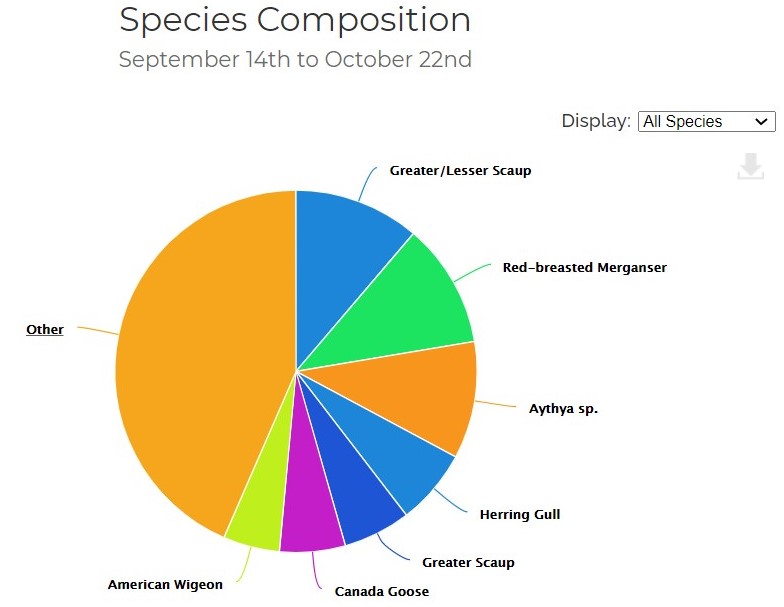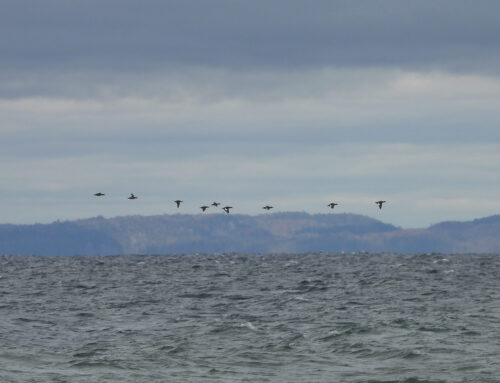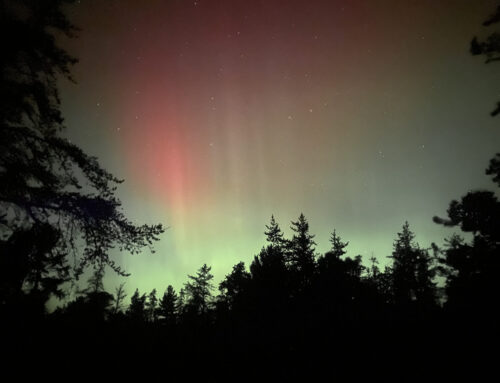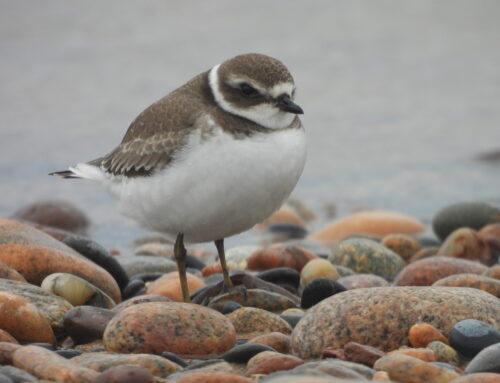In the past month, we’ve seen a lot of changes at the fall waterbird count. While getting snowed on, it’s hard to imagine that, just a month prior, there was a suite of shorebirds working the shoreline, that we had a tropical visitor in the form of a frigatebird, and that the dabblers outnumbered the divers. Changes in migration happen quickly and dramatically at Whitefish Point.
The timing of the waterbird count is formed around the predicted bell curve of the fall migration. We start counting before the peak and continue afterward. Watching this story progress day by day has been one of the greatest wonders of working at the Point. We see small daily changes in diversity and abundance that culminate in large trends. Last week when the first Snow Bunting showed up (on a day where it snowed, appropriately enough) firmly heralded the final period of the count for me. With less than a month left before we wrap up on Nov. 15, we have a few expectations.
Over the past few weeks, we witnessed our large expected Aythya flight. While we still have species of this genus of diving duck moving through, the numbers have decreased substantially from the days that were consecutively in the thousands of individuals. In turn, Long-tailed Duck have begun moving through in increasing numbers. Their fall migration is one of the last great movements we expect here, and we’re excitedly anticipating their increasing numbers. Other divers, such as Bufflehead and Goldeneye, are becoming more regular as the assortment of passerines is slowly shifting. All these small changes are crafting the last chapter at the Point and what is to be expected.

There are the consistent birds as well, ones that have been present during our whole count. One of the migration events that is particularly unique to Whitefish Point is the molt migration of Red-necked Grebe. These waterbirds started moving through in notable numbers before the count began, and although their largest flight days are long past, rarely a day goes by where we don’t see their peculiar silhouette streak across the horizon. The Merlin delightfully watch the migration alongside us daily, though for very different purposes. It’s moving to watch songbirds, exhausted from their long and trying migrations, fight for their lives upon hitting shore as the watchful Merlin patrol the beach. Looking towards the harbor, I can watch the gulls flee as Bald Eagle make their daily pass along the breakwater. Daily we have Common Loon in Whitefish Bay, and their massive size takes me by surprise every time.
To illustrate these trends, I’ll steer you towards Dunkadoo, which not only hosts live updates of our observations at the Point but also showcases the data we’ve collected over the count. While we could run the numbers, I do want to remind everyone what those numbers look and feel like. Watching a group of Long-tailed Duck fly by on their long black wings in their fast and unpredictable flocks is an amazing sight to behold. These ducks contrast greatly with the clean, orderly lines of Red-breasted Merganser streak by in their evenly-spaced flight lines. The sheer abundance of fall migration is what we find so captivating. The diversity of species tells a complex and fascinating story, but the abundance of individuals paints an overwhelming picture. A full sky streaking south with the determination that has moved countless generations before them is a sight you can’t turn away from. The second month of the waterbird count has shown us massive amounts of life on the move, continuing with the ancient rhythms that have driven it for all of time. This final month we eagerly await more.
Text by Fall Waterbird Counter Steve Backus






